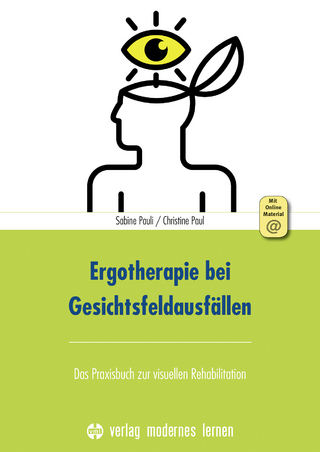
Spine Phenotypes
Academic Press Inc (Verlag)
978-0-12-822778-7 (ISBN)
Multiauthored, with multidisciplinary contributions from world leaders in the field of imaging, spine research, and clinical practice, each chapter is rich in visual depiction of imaging phenotypes, providing examples of some established phenotypic measurements with a range of normal and pathologic images and their clinical implications.
Spine Phenotypes will be a first of its kind reference for spine researchers, clinicians, and industry.
Dr. Samartzis obtained his undergraduate degree from Northwestern University, and further pursued graduate studies in biological sciences, evidence-based health care, clinical epidemiology, medical sciences, and international studies at Harvard University, University of Oxford (UK), University of Cambridge (UK), Erasmus University (The Netherlands), Charles University (Czech Republic), and London School of Economics and Political Science (UK). He completed a postdoctoral fellowship at the The University of Hong Kong. He went on to become the Gilbert Beebe Fellow of the Radiation and Nuclear Board of the National Academies of Science in Washington D.C. and the United States Department of Energy, the Radiation Epidemiology Branch of the National Institutes of Health in Bethesda, Maryland, and at the Radiation Effects Research Foundation (a.k.a. Atomic Bomb Casualty Commission) in Hiroshima, Japan. He has published over 350 peer-reviewed studies in high-impact journals (e.g., Lancet, Arthritis & Rheumatism, JBJS, etc.), book chapters and web-based articles. Jaro Karppinen is Professor of Physical and Rehabilitation Medicine at the Institute of Clinical Medicine, University of Oulu, in Northern Finland. He also works at the Finnish Institute of Occupational Health as a specialist of Physical and Rehabilitation Medicine. He has an academic degree in Biochemistry and has been an investigator in many clinical studies related to low back pain and sciatica. His current research interest has focused on environmental and genetic risk factors of degenerative spinal disorders with a special focus on the etiology and diagnostics of Modic changes. He is the Project Leader of the musculoskeletal subprojects of the Northern Finland Birth Cohorts and a Member of the Executive Group the Northern Finland Birth Cohorts. He is a member of the International Society for the Study of the Lumbar Spine, International Association for the Study of Pain, European Spine Society, and AOSpine Research Network. Frances M.K. Williams is a professor at King’s College London and an honorary consultant in rheumatology at Guy’s and St. Thomas’ NHS Foundation Trust. She’s been a member of the Royal College of Physicians since 1995, completed her PhD at the University of London in 2002 and is also a Fellow at the Royal College Physicians of Edinburgh since 2007. Dr. Williams performs genetic and epidemiological studies in Twins UK and UK Biobank volunteers, as well as patients, to understand better the genetic basis for common conditions such as back pain, age-related hearing impairment and fibromyalgia. The areas of special interest are: intervertebral disc degeneration and low back pain, osteoporosis and vertebral fracture, and chronic pain syndrome. Dr. Williams was the International Society for the Study of Lumbar Spine prizewinner for clinical studies in both 2015 and 2019 and has authored 120+ articles.
1. Anatomy of the spine
2. Biomechanics of the spine
3. Biomechanical models to study spinal phenotypes
4. Animal models to study spinal intervertebral disc phenotypes
5. Imaging technologies of the spine
6. Intervertebral disc degeneration
7. Disc space narrowing and osteophytes
8. Displacement of intervertebral discs
9. High-intensity zones and annular tears
10. Vertebral endplate abnormalities, defects, and changes
11. Vertebral bone marrow (Modic) changes
12. Ossification of the posterior longitudinal ligament
13. Lumbar spinal stenosis
14. Facet joints
15. Paraspinal muscles
16. Spinal alignment
| Erscheinungsdatum | 22.07.2022 |
|---|---|
| Zusatzinfo | 320 illustrations (90 in full color); Illustrations |
| Verlagsort | San Diego |
| Sprache | englisch |
| Maße | 191 x 235 mm |
| Gewicht | 1020 g |
| Themenwelt | Medizin / Pharmazie ► Medizinische Fachgebiete ► Orthopädie |
| Physiotherapie / Ergotherapie ► Rehabilitation ► Neuro-Rehabilitation | |
| Naturwissenschaften ► Biologie | |
| ISBN-10 | 0-12-822778-8 / 0128227788 |
| ISBN-13 | 978-0-12-822778-7 / 9780128227787 |
| Zustand | Neuware |
| Haben Sie eine Frage zum Produkt? |
aus dem Bereich


